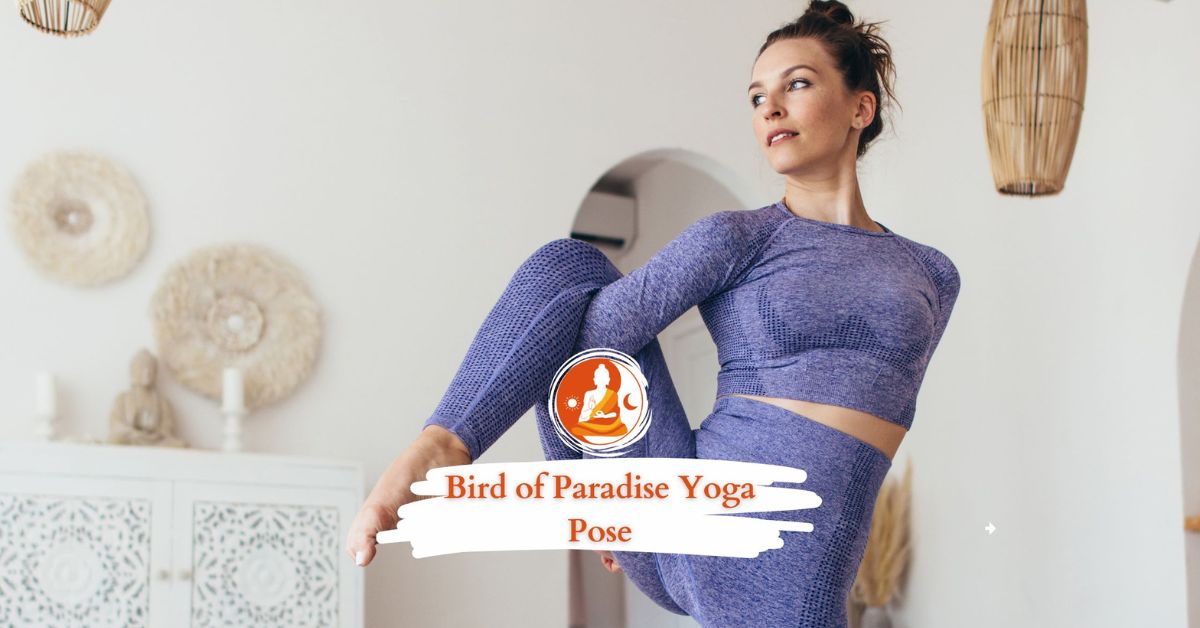A Comprehensive Guide to the Beginner Bird of Paradise Yoga Pose
The beginner Bird of Paradise yoga pose (Svarga Dvijasana) is an inspiring and visually striking asana that embodies strength, flexibility, and balance. While it may seem challenging at first, with the right approach and guidance, beginners can master this pose and enjoy its numerous benefits. This guide will provide you with detailed instructions, benefits, modifications, tips, and common mistakes to avoid, ensuring a successful practice.
Benefits of the Beginner Bird of Paradise Yoga Pose
- Increased Flexibility: The Bird of Paradise pose is excellent for stretching the hamstrings, hips, and lower back. This enhanced flexibility can improve your overall range of motion and support other yoga poses.
- Core Strengthening: Balancing on one leg while holding the other engages your core muscles significantly. This core activation is crucial for stability in many yoga poses and daily activities.
- Improved Balance: As a balancing pose, the Bird of Paradise challenges your coordination and stability. Regular practice can enhance your overall balance, making it easier to progress in your yoga journey.
- Hip Opening: This pose provides a deep stretch in the hip flexors and groin area. This is especially beneficial for those who sit for extended periods, as it can alleviate tension and discomfort in the lower body.
- Mindfulness and Focus: The Bird of Paradise requires concentration and mental clarity to maintain balance. Practicing this pose encourages mindfulness, helping you connect with your breath and body.
How to Practice the Beginner Bird of Paradise Yoga Pose
- Start in a Standing Forward Bend: Begin with your feet hip-width apart. Hinge at your hips to fold forward into a standing forward bend (Uttanasana). Let your upper body relax over your legs, bending your knees slightly if necessary.
- Bend Your Right Knee: Shift your weight onto your left foot and bend your right knee, bringing your right foot towards your right glute. Slide your right arm underneath your knee to reach for your right foot.
- Create the Bind: Grasp your right foot with your right hand. If you can’t reach your foot, use a yoga strap to loop around it for assistance. This will help you establish the bind without straining.
- Extend Your Right Leg: Gradually extend your right leg forward while keeping your left leg grounded. Engage your core to maintain balance.
- Lift Your Torso: As you find your balance, lift your torso upright. You can extend your left arm overhead, reaching towards the sky to create a long line from your fingertips to your extended leg.
- Hold and Breathe: Maintain the pose for several breaths, focusing on your balance and grounding yourself in the moment. To exit, gently lower your right leg back down and return to the standing forward bend.
- Repeat on the Other Side: After holding the pose, switch sides to ensure a balanced practice.
Modifications for Beginners
- Use a Block: If you find balancing difficult, place a yoga block under your hand for extra support. This can help you maintain your alignment without compromising stability.
- Practice Near a Wall: For added security, practice the pose next to a wall. This can give you the confidence to explore the balance without the fear of falling.
- Seated Variation: If standing feels too challenging, try a seated version. Sit with one leg extended in front of you while keeping the other leg bent, focusing on creating a similar bind.
Tips for Success in the Beginner Bird of Paradise Yoga Pose
- Warm Up: Always begin your practice with a warm-up to prepare your body. Incorporate stretches targeting the hamstrings and hips, such as Downward Dog, Pigeon Pose, or Wide-Legged Forward Bend.
- Focus on Alignment: Proper alignment is essential for effectiveness and safety. Ensure your standing leg is straight, your hips are squared, and your back remains straight as you balance.
- Engage Your Core: Maintain core engagement throughout the pose. Drawing your navel towards your spine helps stabilize your torso and enhance balance.
- Breathe Deeply: Remember to breathe deeply and steadily while in the pose. This not only helps maintain focus but also relaxes the body, enhancing your overall practice.
- Be Patient: Mastering the Bird of Paradise pose takes time, especially for beginners. Progress at your own pace, and celebrate small victories along the way.
Common Mistakes to Avoid
- Forcing the Stretch: Avoid pushing yourself too far into the pose. Listen to your body and respect its limits to prevent injury.
- Neglecting Core Engagement: Many beginners forget to engage their core, which is crucial for maintaining balance. Focus on keeping your abdominal muscles activated throughout the pose.
- Rounding the Back: Ensure your back remains straight and aligned. Avoid hunching or rounding your shoulders, as this can lead to strain.
Conclusion
The beginner Bird of Paradise yoga pose is a wonderful addition to your yoga practice, offering numerous benefits for strength, flexibility, and mindfulness. By following the steps and tips outlined in this guide, you can approach this captivating pose with confidence. Remember to be patient with yourself as you progress, and enjoy the journey of discovering the joys of yoga. As you practice the Bird of Paradise, you will not only enhance your physical abilities but also cultivate a deeper connection to your mind and body. Embrace the challenge, and allow the Bird of Paradise to elevate your practice





Comments